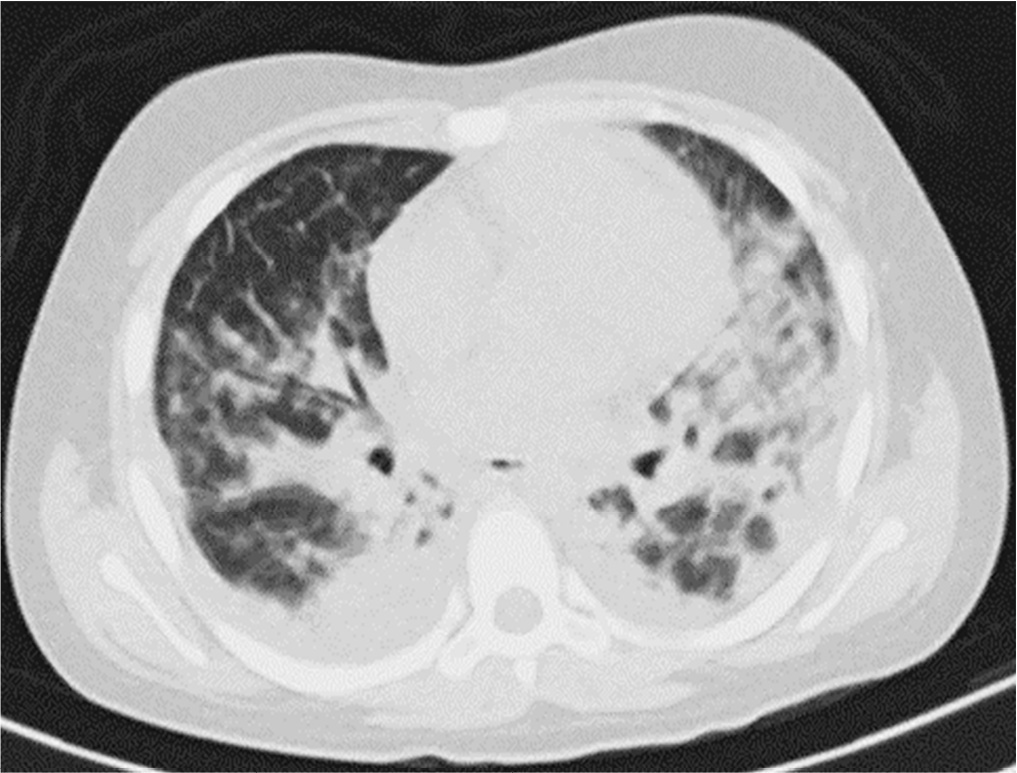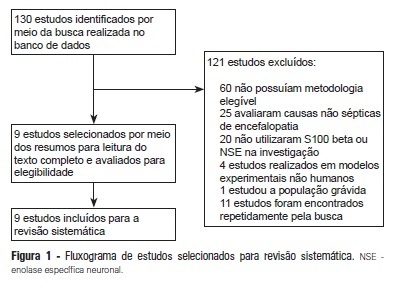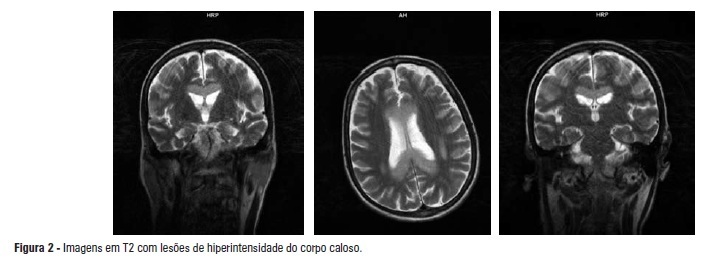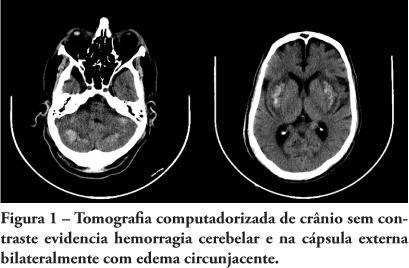Abstract
Rev Bras Ter Intensiva. 2022;34(2):295-299
DOI 10.5935/0103-507X.20220028-en
Posterior reversible encephalopathy syndrome is a rare clinical and radiological syndrome characterized by vasogenic edema of the white matter of the occipital and parietal lobes, which are usually symmetrical, resulting from a secondary manifestation of acute dysfunction of the posterior cerebrovascular system. We describe a case of posterior reversible encephalopathy syndrome secondary to SARS-CoV-2 infection in a 9-year-old boy who developed acute hypoxemic respiratory failure and required assisted mechanical ventilation. The child developed multisystem inflammatory syndrome, and he was monitored in the pediatric intensive care unit and was provided mechanical ventilation and vasoactive agents for hemodynamic support. Additionally, he developed pulmonary and extrapulmonary clinical manifestations along with neuropsychiatric manifestations that required close follow-up and were verified using brain magnetic resonance imaging for timely intervention. Currently, there are few reports of children with posterior reversible encephalopathy syndrome associated with multisystem inflammatory syndrome.

Abstract
Rev Bras Ter Intensiva. 2021;33(3):457-460
DOI 10.5935/0103-507X.20210067
A 63-year-old woman presented to the emergency department with an acute history of fever, prostration and dyspnea. She was diagnosed with severe COVID-19 acute respiratory distress syndrome and, despite optimized critical care support, met the indications for veno-venous extracorporeal membrane oxygenation. On day 34, after 7 days of wean sedation with a positive evolution of neurologic status, she presented a limited generalized tonic-clonic seizure not related to hydroelectrolytic or metabolic imbalance, which led to a diagnostic investigation; her brain imaging tests showed a posterior reversible encephalopathy syndrome. This case emphasizes the issue of neurological complications in patients with severe COVID-19 infection and the importance of early diagnosis and support.

Abstract
Rev Bras Ter Intensiva. 2013;25(1):56-62
DOI 10.1590/S0103-507X2013000100011
OBJECTIVE: The aim of this study was to systematically review the importance of neuron-specific enolase and S100 beta for diagnosing and monitoring septic encephalopathy. METHODS: A PubMed database search was performed to identify studies that evaluated S100 beta and neuron-specific enolase serum levels in patients with sepsis and that were published between January 2000 and April 2012. Only human studies that employed an additional method of neurological assessment were selected. RESULTS: Nine studies were identified, seven of which associated high concentrations of S100 beta and neuron-specific enolase with the development of septic encephalopathy. Four studies also associated these concentrations with increased mortality. However, two studies did not find such an association when they evaluated S100 beta levels, and one of these studies did not observe a correlation between neuron-specific enolase and septic encephalopathy. CONCLUSION: S100 beta and neuron-specific enolase are promising biomarkers for diagnosing and monitoring patients with septic encephalopathy, but more research is necessary.

Abstract
Rev Bras Ter Intensiva. 2013;25(1):68-72
DOI 10.1590/S0103-507X2013000100013
Marchiafava-Bignami disease is a rare affliction characterized by primary degeneration of the corpus callosum associated with chronic consumption of ethanol. The disease may occasionally occur in patients who are not alcoholics but are chronically malnourished. A complex deficiency of group B vitamins is the main etiopathogenic hypothesis, and many patients improve after the administration of these compounds. However, a good response is not always observed. The definitive diagnosis of Marchiafava-Bignami disease can be problematic and is based on features of neuroimaging studies, especially magnetic resonance imaging. Its treatment is still controversial and shows variable results. Because nutritional factors are implicated, as in Wernicke's encephalopathy, some authors claim that replacement of B vitamins is beneficial. The present article is a case report of a severe acute form of Marchiafava-Bignami disease in an alcohol-dependent male patient who improved after the administration of parenteral B vitamins. As a consequence of his neurological and immunologic conditions, he developed multiple pulmonary infections and had a protracted course in the intensive care unit. He eventually died of sepsis associated with an uncommon fungus, Rhodotorula mucilaginosa. The present article reports the clinical and neuroimaging data from this patient and contains a review of Marchiafava-Bignami disease and Rhodotorula infections in the intensive care unit.

Abstract
Rev Bras Ter Intensiva. 2010;22(3):305-309
DOI 10.1590/S0103-507X2010000300014
Hypernatremia is a common electrolyte disorder in people with impaired thirst control mechanism or access to water, and may lead from minimal disorders until coma. Among the hypernatremia morbidities, central nervous system hemorrhage is uncommon and poorly studied. We report a case involving a patient admitted to the intensive care unit with reduced consciousness level, hypernatremia and head computed tomography scan showing bilateral parenchyma hemorrhage. A literature review of hypernatremia hemorrhagic encephalopathy was conducted.

Abstract
Rev Bras Ter Intensiva. 2010;22(2):206-211
DOI 10.1590/S0103-507X2010000200016
In patients with renal failure, encephalopathy is a common problem that may be caused by uremia, thiamine deficiency, dialysis, transplant rejection, hypertension, fluid and electrolyte disturbances or drug toxicity. In general, encephalopathy presents with a symptom complex progressing from mild sensorial clouding to delirium and coma. This review discusses important issues regarding the mechanisms underlying the pathophysiology of uremic encephalopathy. The pathophysiology of uremic encephalopathy up to now is uncertain, but several factors have been postulated to be involved; it is a complex and probably multifactorial process. Hormonal disturbances, oxidative stress, accumulation of metabolites, imbalance in excitatory and inhibitory neurotransmitters, and disturbance of the intermediary metabolism have been identified as contributing factors. Despite continuous therapeutic progress, most neurological complications of uremia, like uremic encephalopathy, fail to fully respond to dialysis and many are elicited or aggravated by dialysis or renal transplantation. On the other hand, previous studies showed that antioxidant therapy could be used as an adjuvant therapy for the treatment of these neurological complications.
Search
Search in:
Case reports (56) Child (53) Coronavirus infections (34) COVID-19 (46) Critical care (116) Critical illness (54) Extracorporeal membrane oxygenation (26) Infant, newborn (27) Intensive care (72) Intensive care units (256) Intensive care units, pediatric (31) mechanical ventilation (38) Mortality (76) Physical therapy modalities (28) Prognosis (61) Respiration, artificial (119) Respiratory insufficiency (26) risk factors (34) SARS-CoV-2 (28) Sepsis (98)